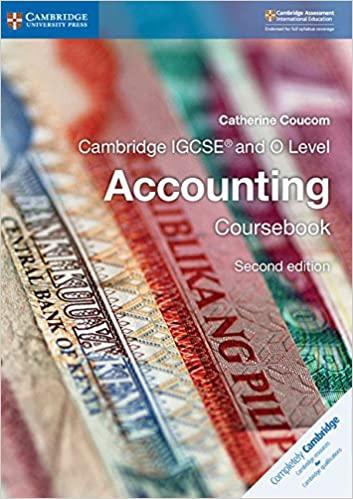The financial year of YZ Limited ends on 30 November. The capital consists of ordinary shares of
Question:
The financial year of YZ Limited ends on 30 November. The capital consists of ordinary shares of $1 each. No additional shares were issued during the year ended 30 November 20–7. The company has no non-current liabilities.
The following information is available:
For the year ended 30 November 20–6:
Gross margin ....................................................................................... 23.50%
Profit margin ....................................................................................... 9.25%
Return on capital employed ...................................................... 5.54%
For the year ended 30 November 20–7:
$
Revenue ....................................................................................... 360,000
Expenses ....................................................................................... 44,500
Gross margin ....................................................................... 20.00%
On 30 November 20–7:
$
Non-current assets ....................................................... 543,000
Current assets ............................................................... 119,500
Current liabilities .......................................................... 92,500
a. Suggest two reasons for the change in the gross margin over the two years.
b. i. Calculate the profit for the year ended 30 November 20–7.
ii. Calculate the profit margin (to two decimal places) for the year ended 30 November 20–7.
iii. State in which year the company had better control of the expenses. Give a reason for your answer.
c. i. Calculate the return on capital employed.
ii. Comment on the change in the return on capital employed over the two years.
iii. State, giving reasons, how each of the following transactions would affect the return on capital employed:
Transaction 1 Sale for cash of surplus non-current assets at book value.
Transaction 2 Issue of additional ordinary shares.
Transaction 3 Receipt of a long-term loan.
Step by Step Answer:

Cambridge IGCSE And O Level Accounting Coursebook
ISBN: 9781316502778
2nd Edition
Authors: Catherine Coucom





